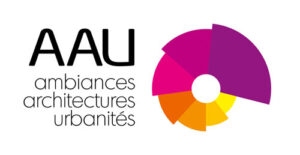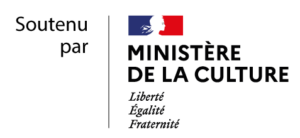Rachel Thomas, Sociologist, CNRS research officer at the CRESSON laboratory (UMR 1563/MCC ENSA de Grenoble). Researcher invited to the Laboratorio Urbano, Faculdade de Arquitetura da Universidade Federal da Bahia (Brazil)
Rio de Janeiro, Saturday, 20 November 2010, 9.15 am. We are a small group ten or so men and women gleefully boarding the minibus taking us to the north of the city, to the Maré quarter, for the first days of preparation for Corpocidade2. After a friendly exchange of greetings, everyone starts chatting. The sound level in the minibus rises swiftly, punctuated by bursts of laughter. People are smiling and swaying as they swap jokes. This geniality, like the comfortable air-conditioned bus, adds to the general relaxed ambiance. Yet suddenly, as our bus makes a turn, the almost festive mood suddenly changes. It is about 9.30 am. Our bus has left Brazil avenue and plunged into the heart of Maré, a favela where about 150,000 people live, built on an old marsh. A barely perceptible whistle can be heard. At the same time, our driver slows down. We crawl along at barely 20 kph, our previous carefree chatter replaced by silence and growing tension.Just a few metres away, standing back, a “little soldier” controls the traffic flowing in and out of the “territory”. No vindictive gesture or violent words. He is just there, clearly visible, leaning nonchalantly against the wall, an impressive weapon held against his leg. He can’t be more than 15 or 16 years old. Around him, we can see ordinary scenes of life in the quarter; children playing on some rubble, a few men drinking beer in front of a refreshment stall, some pretty teenagers crossing the street to the bus stop. The scene barely lasts 5 minutes. Yet it seems to go on forever. Inside the bus, the group dynamic has broken down. Embarkation has given way to suspension. Faces are frozen, hands are clenched, our bodies stiff in our seats in a collective movement of withdrawal, introspection and de-synchronization. We have all moved from an encompassing state, reflecting the shared sensation of relaxation and closeness, to a state of tension and hypnosis. The implicit violence of one person’s presence has created the conditions for a paralyzing anxiety and fascination.
A few minutes later, when we get off the bus, two of my colleagues explain to me that the driver had “simply” gone the wrong way in. Here in the heart of the favela, territory is shared at the cost of daily controls of all incoming and outgoing traffic, and access to another territory is a matter of constant negotiation.
The example is undoubtedly extreme. Yet it clearly illustrates the questions we have been asking ourselves for two years now on the issue of appeasing pedestrian mobility in the 21st century3. Although environmental issues widely publicize thinking on the reorganization of urban mobility in our Western societies, the debate on the necessary pacification of the street (and favelas) in emerging societies like Brazil are clearly fuelled by feedback in hygienist, security-conscious terms. In both cases, the measures introduced create new types of ambiance, which affect an era’s sensitivities and sociability in the ways we know since the works of Simmel (1903), Kracauer (1926) or Benjamin (1936). Rather than worrying about urban pathologies, our attention focuses on the variations of ordinary experience, their plasticity and how they are embodied in the pedestrian’s daily life. All these are societal questions that the issue of ambiance can address.
1. This editorial includes elements of a study jointly conducted by France, Brazil and Canada on the subject of “sanitizing pedestrian ambiances” financed by the CNRS–MEEDDM PIRVE programme: Thomas, Rachel (under the direction of), Balez Suzel, Bérubé Gabriel, Bonnet Aurore (2010). L’aseptisation de la ville piétonne au XXIe siècle. Entre passivité et plasticité des corps en marche. PIRVE CNRS MEEDDM, research report Cresson no. 78, December.
2. Coordinated by Fabiana Dultra Britto (PPGDANCA/UFBA), Paola Berensetein-Jacques (PPGAU/UFBA) and Margareth da Silva Pereira (PROURB/UFRJ), Corpocidade is an event, begun in 2008, which brings together researchers, university professors, students and artists, around a theme of urban aesthetics. In its second edition, in November 2010, it dealt with the issue of conflict and dissension in public areas. For more information, see: http://www.corpocidade.dan.ufba.br
3. We are currently pursuing this questioning to coordinate a response to the call for papers by the ANR “Espace et Territoire” on the theme of the “noticeable riddles of contemporary urban mobility”.



